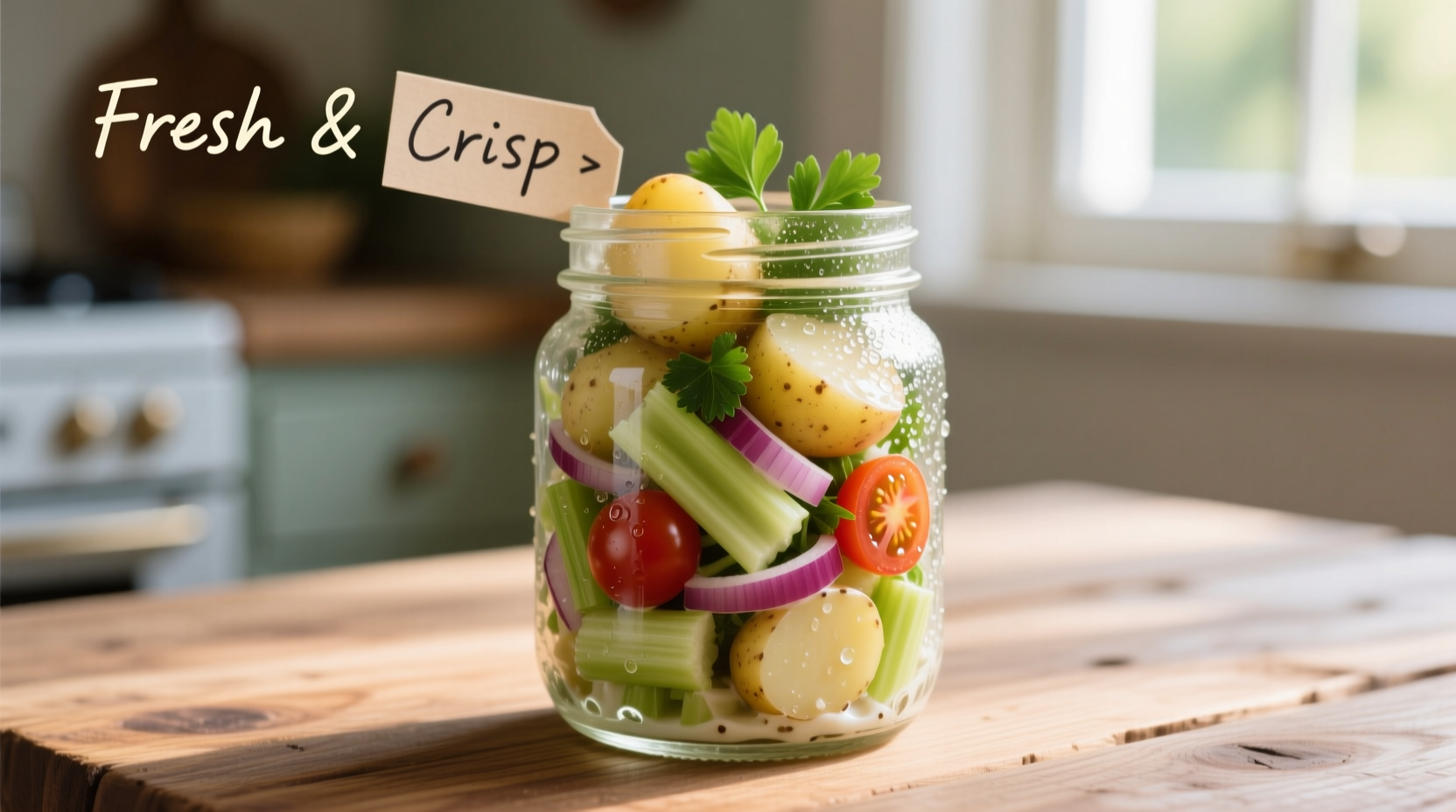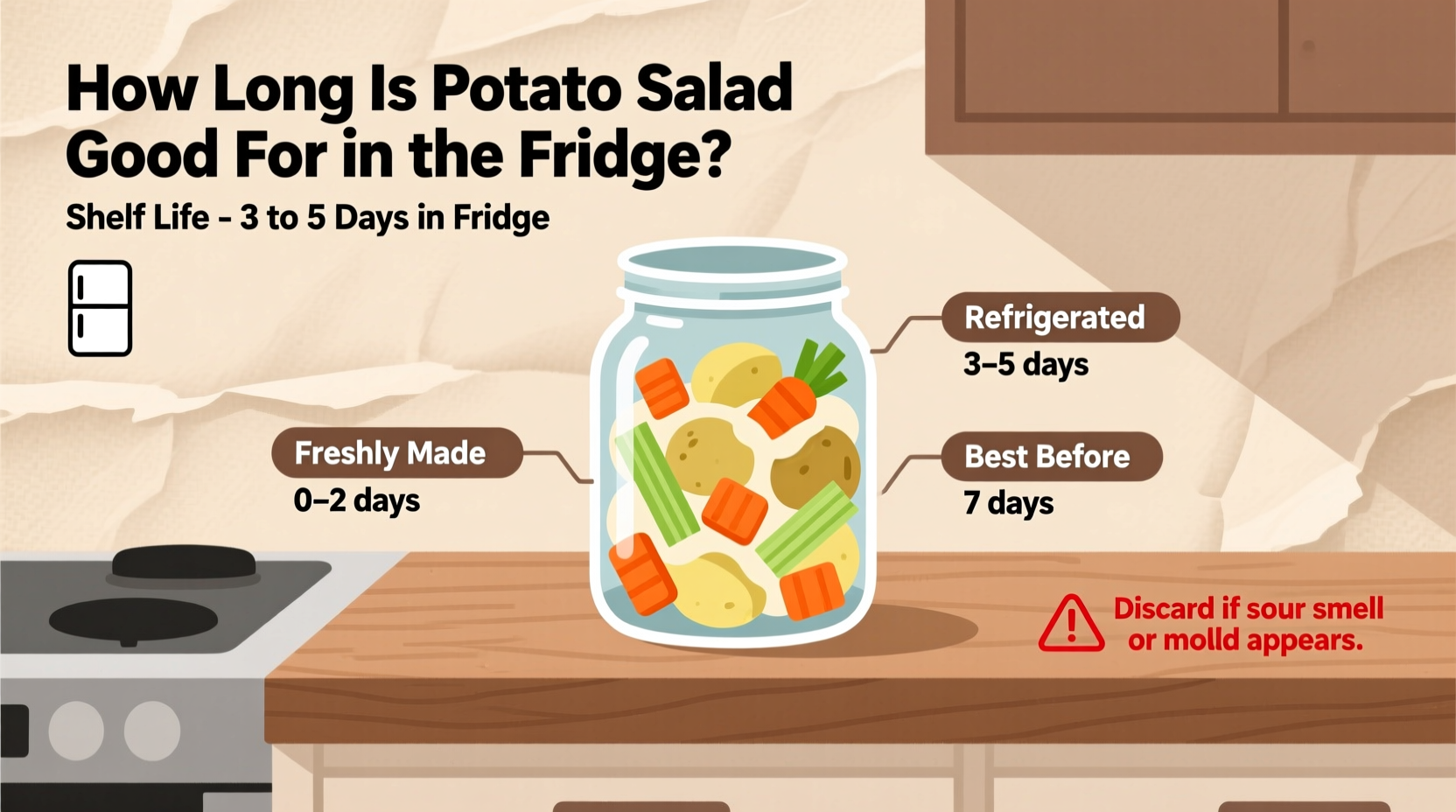Knowing exactly how long potato salad lasts in the fridge can prevent foodborne illness while reducing unnecessary food waste. As a chef who's worked with food safety protocols in professional kitchens for over 15 years, I've seen how proper storage practices make all the difference between a delicious picnic side dish and a potential health hazard.
The Science Behind Potato Salad Shelf Life
Potato salad presents unique food safety challenges because it combines several perishable ingredients. The potatoes themselves create a moist environment where bacteria can thrive, while mayonnaise-based dressings (despite common misconceptions) don't preserve the salad—they actually contribute to the ideal conditions for bacterial growth when not properly refrigerated.
According to the USDA Food Safety and Inspection Service, cooked potatoes maintain quality for 3-5 days under proper refrigeration. However, when combined with other ingredients like eggs, dairy, and proteins, the clock starts ticking faster.

Factors That Determine Your Potato Salad's Freshness
Not all potato salads share the same shelf life. Several variables affect how long your potato salad remains safe to eat:
- Ingredients used: Egg-based salads spoil faster than vinegar-based versions
- Initial preparation temperature: Salad made with warm potatoes creates condensation in containers
- Refrigerator temperature: Must maintain 40°F (4°C) or below consistently
- Container type: Airtight containers prevent moisture loss and contamination
- Cross-contamination: Using clean utensils when serving extends freshness
Optimal Storage Practices for Maximum Freshness
Follow these professional kitchen-tested methods to maximize your potato salad's shelf life:
- Cool ingredients separately: Chill cooked potatoes, eggs, and other components before mixing
- Use shallow containers: Store in containers no deeper than 2 inches to promote even cooling
- Label with dates: Mark preparation date clearly on the container
- Store on middle shelf: Avoid door shelves where temperature fluctuates
- Keep dressing separate: For meal prep, store dressing separately and mix before serving
| Storage Condition | Maximum Shelf Life | Quality Notes |
|---|---|---|
| Properly refrigerated (≤40°F) | 3-5 days | Best quality within first 72 hours |
| Room temperature (2 hours+) | Discard immediately | Bacteria multiply rapidly between 40-140°F |
| Freezer storage | 1-2 months | Texture degrades upon thawing |
| Vinegar-based dressing | 5-7 days | Acidic environment slows bacterial growth |
Recognizing When Potato Salad Has Spoiled
Don't rely solely on the calendar when determining how long potato salad is good for in the refrigerator. Your senses provide critical safety information:
- Visual inspection: Look for mold growth, discoloration, or liquid separation
- Smell test: Sour or acidic odor indicates spoilage (beyond normal vinegar smell)
- Texture check: Slimy or mushy potatoes signal bacterial growth
- Taste warning: If anything seems off, spit it out immediately and discard the salad
The Centers for Disease Control and Prevention emphasizes that harmful bacteria often don't produce noticeable changes in food. When in doubt, throw it out—especially with egg-containing salads.
Potato Salad Safety Timeline: What Happens Day by Day
Understanding the shelf life of potato salad in fridge requires knowing what happens at each stage:
- Day 0 (Preparation): Bacteria begin multiplying if not cooled properly within 2 hours
- Day 1-2: Optimal flavor and texture; minimal bacterial growth if properly refrigerated
- Day 3: Quality begins declining; check carefully for early spoilage signs
- Day 4-5: Increased risk of foodborne illness; discard if any questionable signs appear
- Day 6+: High risk of food poisoning; always discard after 5 days regardless of appearance
Special Considerations for Different Potato Salad Types
Various potato salad recipes have different safety profiles:
- Traditional mayonnaise-based: 3-4 days maximum due to egg content
- Vinegar or mustard-based: Up to 5-7 days thanks to acidic preservation
- Store-bought prepared: Follow "use by" date; typically 3-5 days after opening
- Potato salad with seafood: Maximum 2-3 days due to additional perishable ingredients
- Homemade with fresh herbs: May spoil faster due to additional moisture content
When serving at outdoor events, keep potato salad in a cooler with ice packs and never leave it out for more than one hour when temperatures exceed 90°F (32°C).
Food Safety Myths Debunked
Several common misconceptions about potato salad safety need clarification:
- Myth: Mayonnaise causes spoilage
Fact: Commercial mayonnaise's acidity actually helps preserve salads; the problem comes from other ingredients and temperature abuse - Myth: If it smells fine, it's safe to eat
Fact: Dangerous bacteria like Staphylococcus aureus don't always produce noticeable odors - Myth: Freezing extends shelf life indefinitely
Fact: While freezing prevents bacterial growth, quality degrades after 1-2 months
The University of Maryland Extension Food Safety Program confirms that proper refrigeration is the single most important factor in preventing foodborne illness from potato salad and similar dishes.
Maximizing Enjoyment While Staying Safe
To enjoy your potato salad without worry, follow these professional recommendations:
- Prepare potato salad the day you plan to serve it whenever possible
- Use glass containers for storage—they maintain temperature better than plastic
- Place containers on a bed of ice in coolers for outdoor events
- When in doubt about freshness, repurpose older salad into potato soup (only if within 5 days and shows no spoilage signs)
- Always use clean utensils when serving to prevent cross-contamination
Remember that food safety guidelines for how long potato salad lasts in the refrigerator exist to protect your health. Following these evidence-based practices ensures you can enjoy this classic dish without risking foodborne illness.











 浙公网安备
33010002000092号
浙公网安备
33010002000092号 浙B2-20120091-4
浙B2-20120091-4